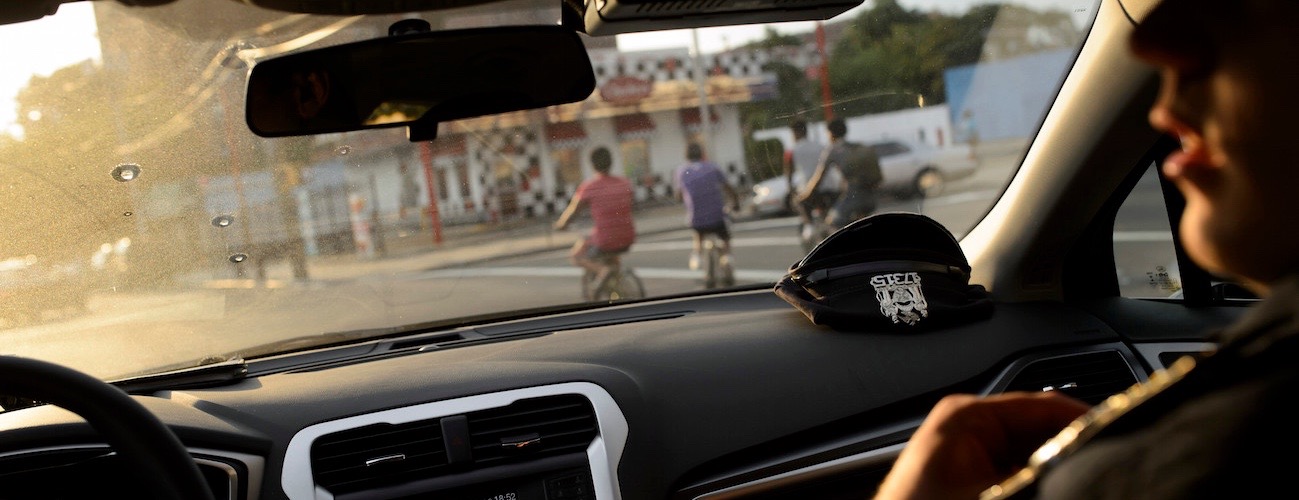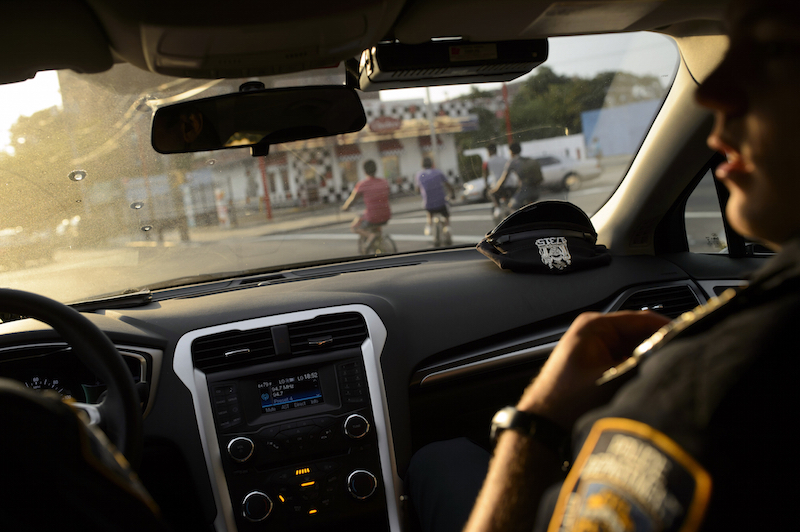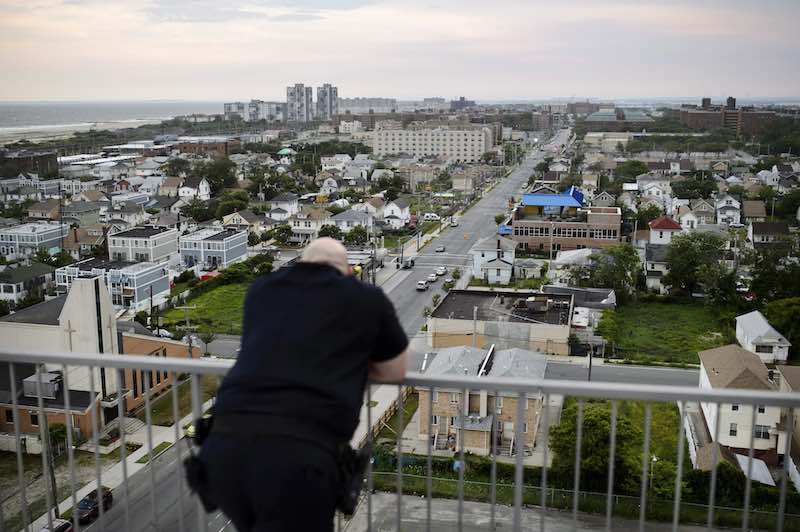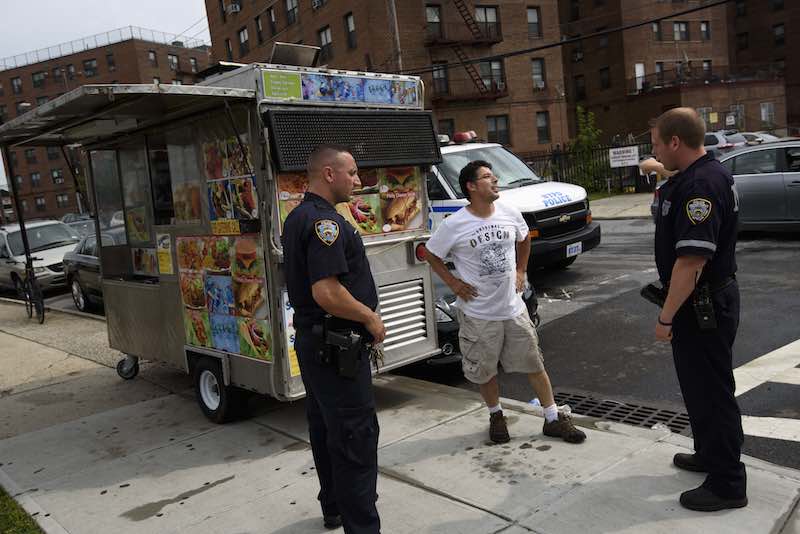Sign up for the daily CJR newsletter.
George Holliday’s video of Los Angeles police officers beating Rodney King in March 1991 was the first cop watch video to go viral, albeit via TV broadcasts rather than the still-nascent internet. Twenty-five years later, the media landscape is filled with thousands of images and video clips showing everyday scenes of police violence snapped on smartphones and shared across social media.
Some of these videos—among them, the chokehold killing of Eric Garner and the shooting of Walter Scott in North Charleston, SC—are now seared into the public consciousness. Their release has moved people into the street, forced criminal investigations, and fueled a powerful political movement agitating for criminal justice reform.
Combine this user-generated content with footage from police dashboard and body cams, and there now exists a rich, growing archive of evidence that America has a serious problem with police violence.
Major media has lagged behind this user-generated content in showing visual evidence of police misconduct. As news organizations play catch up, the police embed, sometimes known as a “ride-along,” has resurfaced in recent months as an immersive, if problematic, reporting tool: Put a photographer in a squad car for a few days or spend a day walking with a beat cop and see what happens.
All embeds are performances on some level, whether they’re with police departments, politicians, or the military. Journalists must play a subtle game, agreeing to participate in the show and tell, while doing their best to capture participants off script. Damaging pictures can get a photographer kicked out. Showing too rosy a view can be rightfully interpreted as public relations. This is especially true now, with police departments under scrutiny and craving good press.
Karsten Moran/The New York Times/Redux
Time had a lot at stake with its August 24 cover story, “What it’s like to be a cop in America,” set in Philadelphia’s 19th police district. Freelance photographer Natalie Keyssar was assigned to spend five 12-hour days riding in the back seat of squad cars on patrol in the West Philadelphia neighborhood. No doubt the Philadelphia police were hoping for good press. They needed it after paying out $200,000 to Najee Rivera, whose brutal 2013 beating was caught on a surveillance camera, and the April takedown and chokehold of Tyree Carroll, filmed on a cellphone by a nearby resident.
What was amazing about being on the other side of the blue wall is you get to see how people look at the police, and I was very interested in these passing faces, flickers of fear, complexity on the faces of the children.”
The pictures published in Time’s print edition follow familiar tropes, and paint officers in a largely positive light. Officers are listening, engaged, and interacting with the public. We see the captain, a major character in the story, having a friendly chat with an old woman in her kitchen. Other pictures could be stills out of Law and Order, and in that sense don’t take the viewer far. A female officer listens intently to a squad car radio; officers mill around inside a precinct station.
The better, more investigative pictures focus squarely on street interactions, where we see the power dynamics of a police stop, and the politics of those interactions through the body language and expressions of both police and civilians. Keyssar wore a bulletproof vest and, by her own admission, was “inherently perceived as part of the police” by neighborhood residents.
She used that perceived alliance to her benefit. “What was amazing about being on the other side of the blue wall is you get to see how people look at the police, and I was very interested in these passing faces, flickers of fear, complexity on the faces of the children. That was one of the big things I was thinking about on this assignment,” she told CJR.
Time published several of those flickering faces in an online slide show, though none appeared in the print edition. These images show the police as a kind of occupying power, closed off in their vehicles, completely separated from those outside. What we see is the gaze of residents as police power passes in front of their eyes, and this is extraordinary. In that way, the images are similar to Ben Lowy’s series Perspectives, shot from inside a Humvee in Iraq while embedded with the US military.
The Philadelphia police placed no restrictions on the photographer, and didn’t ask to see the pictures beforehand, according to Kira Pollack, director of photography for Time.
When the Time story came out, a Philadelphia TV station covered it as an upbeat story of local cops who made the national media. A week later, another Philadelphia police officer made news through social media when he was filmed shaking down a driver. Either buy tickets to a police fundraiser, he told the driver, or he would tow the man’s car. The video went viral, garnering 1.3 million views, and landed the officer on desk duty.
In August, The New York Times published a profile of the NYPD’s new neighborhood policing plan by following foot patrol officers with the 101st Precinct in Far Rockaway, Queens. Freelance photographer Karsten Moran spent two days with officers, working one eight-hour shift per day. “To some extent, it is obviously curated, since they decide which cops to send us out on,” Moran told CJR. But like Keyssar, he said the officers never directed him as to what to shoot or told him to stop shooting.
Karsten Moran/The New York Times/Redux
The pictures are revealing for what they don’t show. The story opens with a picture of an officer seen from behind, perched on the roof of a housing project looking down across the landscape. It’s a view as high above and as far from neighborhood street life as one can get without actually flying in a helicopter.
In the second picture, officers are on the street, talking to a food cart vendor. This unremarkable encounter is reframed as newsworthy because the officers aren’t really just talking, but have intentionally stopped to “connect.” This is one of the few pictures that captures officers and civilians interacting. The photographer said there were more encounters between police and residents, but many locals were fearful of being seen with police, and they asked him not to photograph.
Karsten Moran/The New York Times/Redux
The series also includes images of daily life, where quotes from residents about their opinions on local policing stand in for pictures that show that policing. In that sense, the series could have been more complete.
News organizations owe the public more vigorous reporting on policing issues. Embeds can be one of several reporting strategies, but the embed is only effective if publications are willing to invest the resources and time. When given an opportunity to embed, photographers should look for interactions between police and civilians, rather than fixing their frame only on police officers. In communities of color where policing has been viewed as overly aggressive, a photographer needs to be especially alert in order to decipher and capture the racial and power dynamics of patrols, stops, and arrests.
Since embeds are in some ways controlled situations, it is rare they will produce pictures of police misconduct. For those pictures and videos, the best source is still user-generated content made from cameras the officers can’t see.
Has America ever needed a media defender more than now? Help us by joining CJR today.










